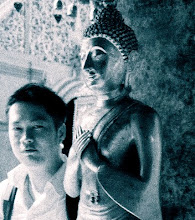
Sixteenth century Portuguese traders from Goa, India sailing to the Far East in search of spices found a small island where they replenished their water supplies. They named it Pulo Pinaom. In the 17th century, Penang’s strategic location at the northern entry to the Straits of Malacca provided a sheltered harbour during the monsoon months for Chinese, Indian, Arabian and European ships, which ineluctably also became a fertile hunting ground for pirates.
One of the very first Englishmen to reach Penang was the merchant-navigator Sir James Lancaster who in 1588 served under Sir Francis Drake as commander of the Edward Bonadventure against the nemesis of the Spanish Armada. On April 10, 1591, commanding the same ship, he set sail from Plymouth for the East Indies, reaching Penang in June 1592, remaining on the island until September of the same year and pillaging every vessel he encountered. He returned to England in May 1594.
Originally part of the Malay sultanate of Kedah, Penang was ceded to the British East India Company in 1786 by the Sultan of Kedah, in exchange for military protection from Siamese and Burmese armies who were threatening Kedah. On 11 August 1786, Captain Francis Light, known as the founder of Penang, hoisted the Union Jack thereby taking formal possession of Penang and renamed it Prince of Wales Island (name used until after 1867) in honour of the heir to the British throne. Penang was the first British possession in the Malay States and Southeast Asia.
Unbeknownst to the Sultan, Light had acted without the approval of the East India Company when he promised military protection. When the Company failed to aid Kedah when it was attacked by Siam, the Sultan tried to retake the island in 1790. The attempt was unsuccessful, and the Sultan was forced to cede the island to the Company for an honorarium of 6,000 Spanish dollars per annum. This was later increased to 10,000 dollars, with Province Wellesley (Seberang Prai) being added to Penang in 1800. An annual honorarium of 18,800 ringgit continues to be paid by the Penang State Government to the Sultan of Kedah [1].
The settlement was first built around the harbour with Fort Cornwallis forming the island's defence. Light became the first Superintendent of the Prince of Wales Island. To expedite jungle clearing by labourers, Light fired silver coins from his ship cannons into the dense vegetation, and the land was cleared in no time. The original four streets of George Town were Beach Street, Light Street, Pitt Street (now Masjid Kapitan Keling Street) and Chulia Street, all of which still form the main thoroughfares of the modern city. Other early roads include Church Street, Bishop Street, China Street and Market Street, and by the early 1800s also Armenian Street and Acheen Street.
Light declared Prince of Wales Island a free port to attract trade away from the Dutch who were then the colonial ruler of the Dutch East Indies. This strategy drew many immigrant traders to Penang. Settlers were allowed to claim whatever land they could clear. By 1789, Penang had 5,000 residents and this doubled by the end of the following decade. The first Chinese settlers in Penang came from an existing community in Kedah, with their leader, called a Kapitan Cina, being Koh Lay Huan, a Baba.[2]
http://en.wikipedia.org/wiki/History_of_modern_Penang




No comments:
Post a Comment